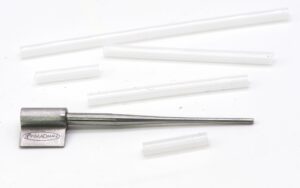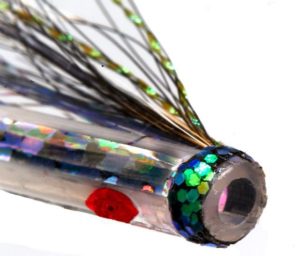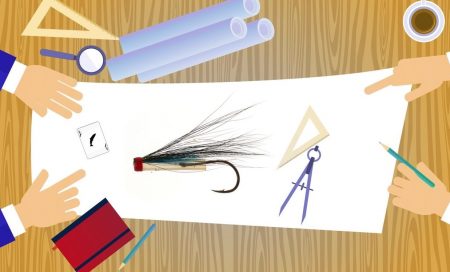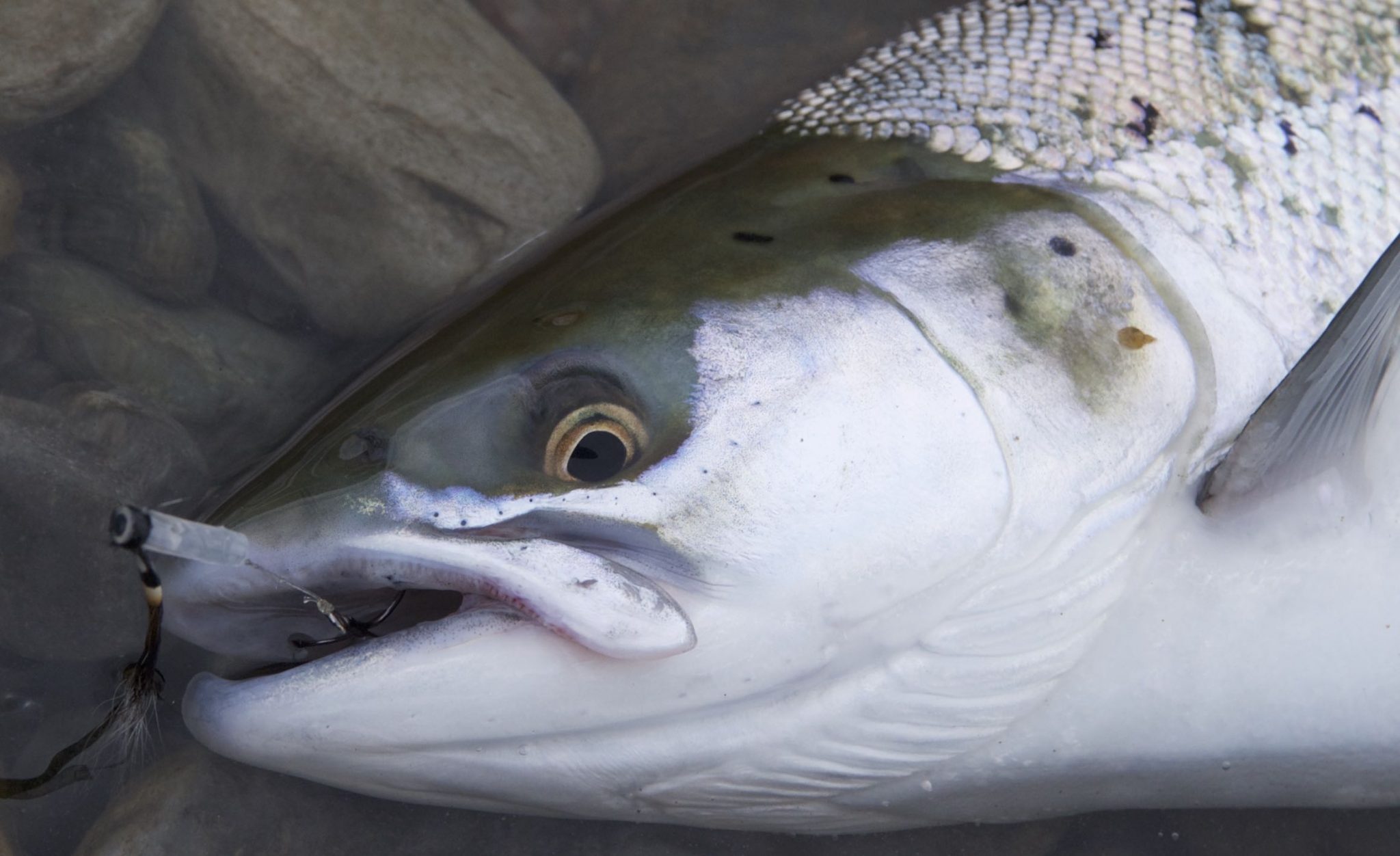
Spellbound by riffling hitch
Riffling hitch anglers benefit from some consistency in the flies ability to stay on the surface – and at the same time we want a fly that looks lively at the end of the leader – so obviously we can’t solely focus on the hitch fly´s ability to stay on the surface – we must compromise.
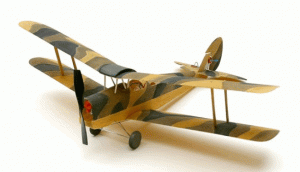
We can’t solely focus on the hitch fly´s ability to stay on the surface – we must compromise.
To move unpredictably is a hallmark of superior lures
Importance of detail in Riffling Hitch flies
One specific riffling hitch fly can be particularly good compared to other seemingly identical riffling hitch flies
It may sound like a bunch of hocus-pocus and mumbo jumbo, but the fact is that Atlantic salmon is the final judge, and they seem to pay a lot of attention to details in RH flies – and probably also in many other artificial flies for that matter
Atlantic salmon will be the final judge and they seem to pay a lot of attention to details in RH flies. Riffling hitch is one of the diseplines in salmon fishing where the questions about flies and fishing – expose the fact that we know just about nothing when it comes details in salmon flies.
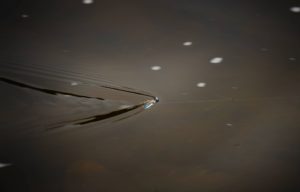
Unpredictable micro-movements in Riffling Hitch tube flies

Tying the V-FLY
The V-FLY is one of the most simple and yet effective riffling hitch fly patterns you can get. Used by 100´s anglers every season it consistently produces fish on the bank – You will be surprised to see how this seemingly neutral pattern will bring fish to the surface
If you follow our outlining on this specific pattern closely – You will get one of the best salmon Riffling Hitch flies you can carry in your box.
The V-Fly ™ that you find tying instructions for below is cut into proportion to make a fly with all the right abilities.
Hole in the center of the riffling hitch fly - Use fly from both banks
The position of the hole for insertion of the leader makes this fly equally good from both banks. The dimension of the tube causes the Riffling Hitch fly to leave a delicate and highly attractive wake behind.
Construction of the V-shaped wing and the soft squirrel hair will work wonders on difficult fish.
The inner diameter of the tube supports the hook, thus allowing you to leave the hook in your favoured position – Using a single double or treble hook.
The perfect tube! – Low-memory tubing
The tube that we use for our riffling hitch flies is made specifically for this purpose – Produced from a unique compound that gives us a tube that won’t split – but will support your hook (keeping it in place) The tube will eventually fall back into place after you ended fishing and have removed the hook.
Hair from young squirrels works wonders.
Hair from silver tippet squirrel is a unique material to lure salmon, steelhead and other kinds of trout. These hairs can be quite diverse depending on where you cut them on the actual tail, and many different flies, from tiny Smuts to big # 2/0 single hook flies, could essentially come from one single tail – But squirrel tails also differ much in appearance and quality depending upon the age of the squirrel – and hair from young squirrels have the texture and quality that we have found to be prime stuff.
Step by step tying instructions
Before you start!!!!! A smart tool for riffling hitch fly tying
Before you start…. make yourself a tool to poke a hole in the belly of the tube fly. I have below some images of the tool I have designed for the job.
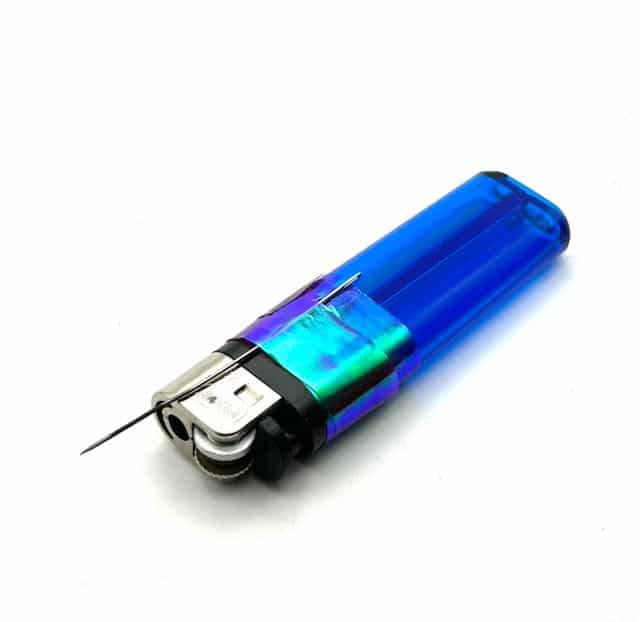
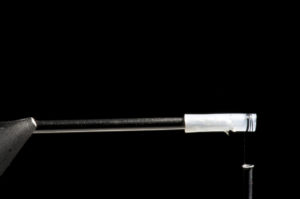
Fix the tube to the needle. Make sure to put the entrance hole for the leader right opposite the centre of the wing. The tread I use is 12/0
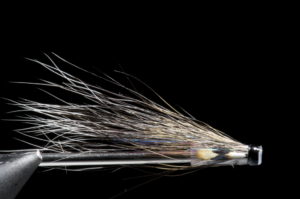
Ready spawned Riffling Hitch V-FLY
A special tube fly tying needle for riffling hitch flies
A specially made needle for short tube flies as riffling hitch flies – bottle tubes. Made for our 3.2 mm. Hitch tube with an inside diameter (Ø) of 1.8 & 2.0 mm. The total length is 62 mm.
See this and other three tubes fly tying needles in the Fishmadman shop
Small Youtube film on how we do pixel-heads on our Hitchman flies
What’s here on our Youtube channel

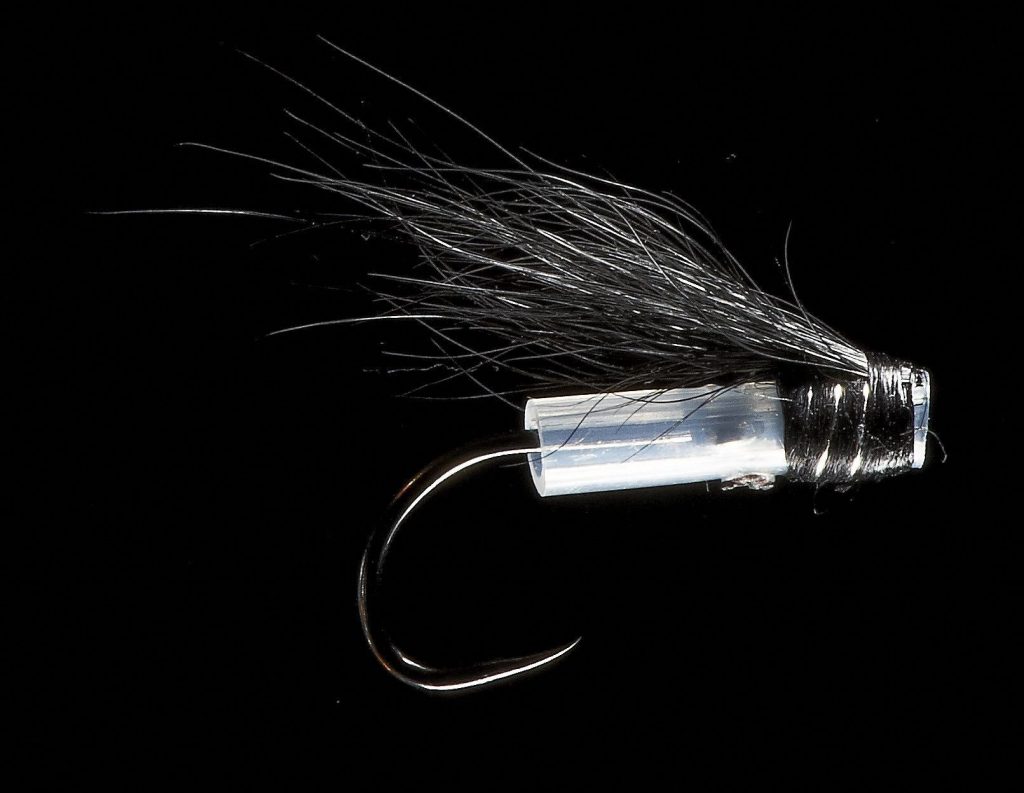
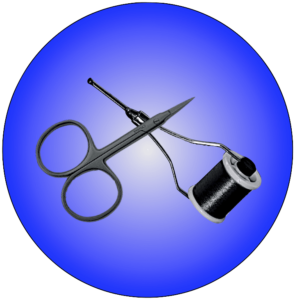
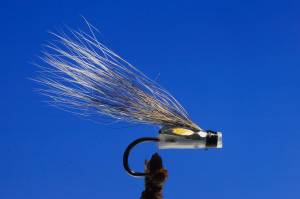
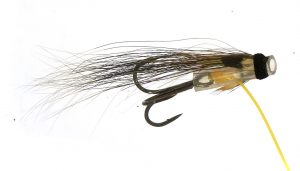
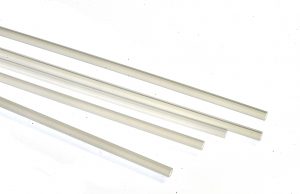
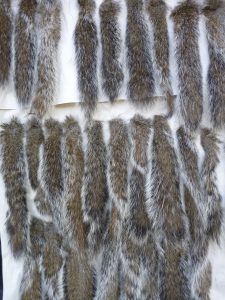
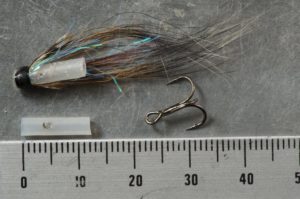 Tube to use for this Riffling Hitch V-FLY: Fishmadman Riffling Hitch Tube
Tube to use for this Riffling Hitch V-FLY: Fishmadman Riffling Hitch Tube 

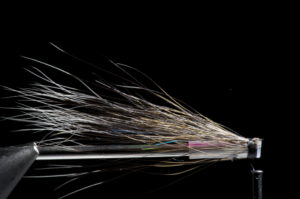 Tie in a little bundle of silver tippet squirrel app. 40 mm. (1,5 inch.)
Tie in a little bundle of silver tippet squirrel app. 40 mm. (1,5 inch.)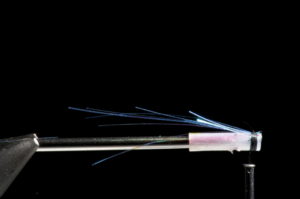 Tie in a little bundle of Veniards Crystal flash Pearl Blue. A few strands double the length of the fly – The rest in the same length as the tube.
Tie in a little bundle of Veniards Crystal flash Pearl Blue. A few strands double the length of the fly – The rest in the same length as the tube.